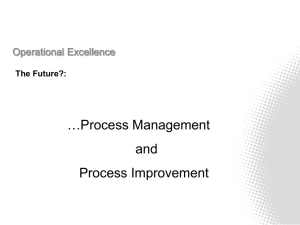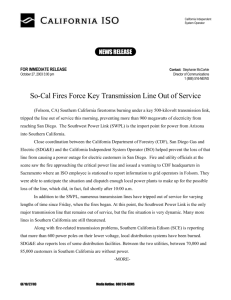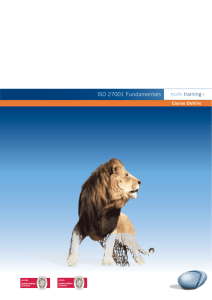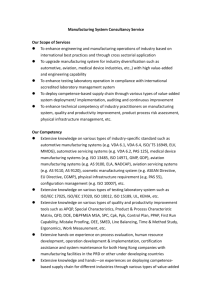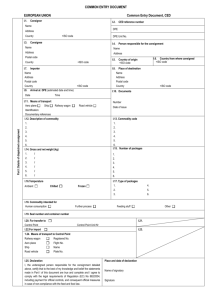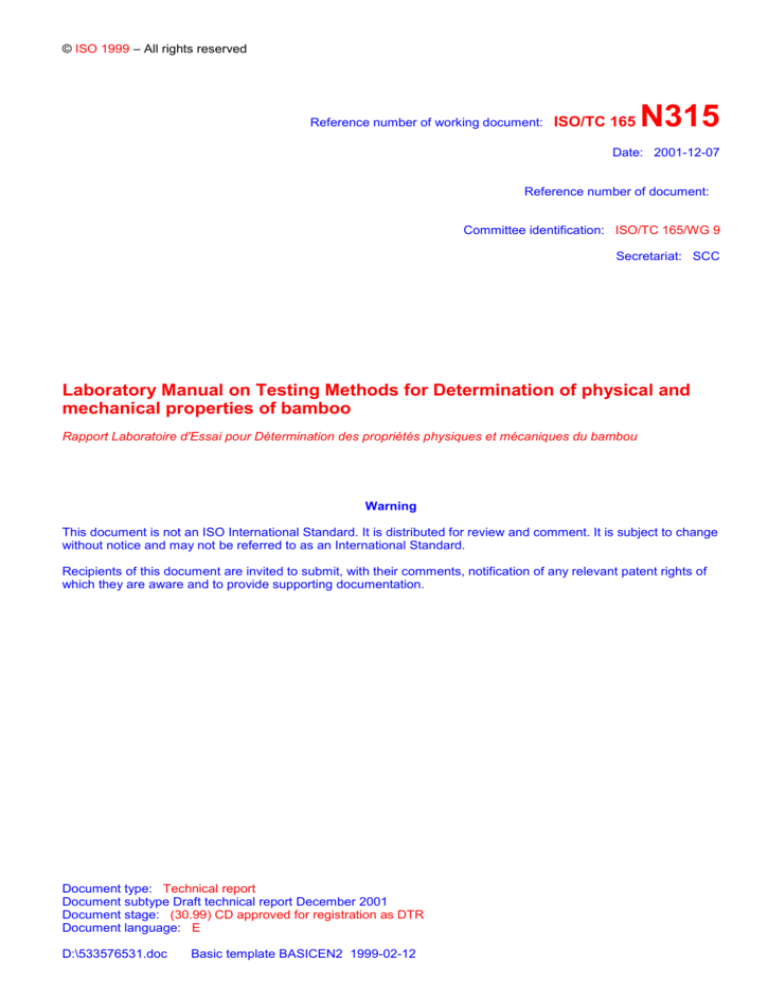
© ISO 1999 – All rights reserved
Reference number of working document:
ISO/TC 165
N315
Date: 2001-12-07
Reference number of document:
Committee identification: ISO/TC 165/WG 9
Secretariat: SCC
Laboratory Manual on Testing Methods for Determination of physical and
mechanical properties of bamboo
Rapport Laboratoire d'Essai pour Détermination des propriétés physiques et mécaniques du bambou
Warning
This document is not an ISO International Standard. It is distributed for review and comment. It is subject to change
without notice and may not be referred to as an International Standard.
Recipients of this document are invited to submit, with their comments, notification of any relevant patent rights of
which they are aware and to provide supporting documentation.
Document type: Technical report
Document subtype Draft technical report December 2001
Document stage: (30.99) CD approved for registration as DTR
Document language: E
D:\533576531.doc
Basic template BASICEN2 1999-02-12
ISO/
Copyright notice
This ISO document is a working draft or committee draft and is copyright-protected by ISO. While the
reproduction of working drafts or committee drafts in any form for use by participants in the ISO standards
development process is permitted without prior permission from ISO, neither this document nor any extract
from it may be reproduced, stored or transmitted in any form for any other purpose without prior written
permission from ISO.
Requests for permission to reproduce this document for the purpose of selling it should be addressed as
shown below or to ISO’s member body in the country of the requester:
[Indicate :
the full address
telephone number
fax number
telex number
and electronic mail address
as appropriate, of the Copyright Manager of the ISO member body responsible for the secretariat of the TC
or SC within the framework of which the draft has been prepared]
Reproduction for sales purposes may be subject to royalty payments or a licensing agreement.
Violators may be prosecuted.
ii
ISO/
Contents
1
Scope .............................................................................................................................................................. 1
4.2.1 Measurement and weight. ................................................................................................................................. 1
5.3 Felling, marking and conversion. ....................................................................................................................... 1
4.2.2 Temperature and humidity. .............................................................................................................................. 1
5.6 Marking and conversion into test specimens. .................................................................................................. 6
6 Moisture content ...................................................................................................................................................... 8
6.3 Apparatus .............................................................................................................................................................. 8
6.4 Preparation of test specimen .............................................................................................................................. 8
7 Mass by volume ....................................................................................................................................................... 8
7.1 Scope and field of application ............................................................................................................................. 8
7.4 Preparation of test pieces .................................................................................................................................... 8
7.5 Procedure .............................................................................................................................................................. 8
7.6 Determination in the absolutely dry condition .................................................................................................. 9
8 Shrinkage................................................................................................................................................................ 11
8.5.2 Procedure. ....................................................................................................................................................... 11
9 Compression .......................................................................................................................................................... 12
9.3 Apparatus ............................................................................................................................................................ 12
9.4 Preparation of test specimens .......................................................................................................................... 12
10 Static bending ...................................................................................................................................................... 13
10.1 Scope ................................................................................................................................................................. 13
10.3 Apparatus .......................................................................................................................................................... 13
10.4 Preparation of test culms ................................................................................................................................ 13
10.5.1 Moment of inertia. (also 10.5.4) .................................................................................................................... 13
10.5.2 Procedure ....................................................................................................................................................... 14
10.5.3 E-modulus ...................................................................................................................................................... 14
11 Shear ..................................................................................................................................................................... 20
11.1 Scope ................................................................................................................................................................. 20
11.4.2 Specimens ...................................................................................................................................................... 20
12 Tension ................................................................................................................................................................. 22
12.4.2 Specimens ...................................................................................................................................................... 22
12.4.4 Form of the specimens ................................................................................................................................. 22
References................................................................................................................................................................. 24
© ISO 1999 – All rights reserved
iii
ISO/
Foreword
ISO (the International Organization for Standardization) is a worldwide federation of national standards bodies (ISO
member bodies). The work of preparing International Standards is normally carried out through ISO technical
committees. Each member body interested in a subject for which a technical committee has been established has
the right to be represented on that committee. International organizations, governmental and non-governmental, in
liaison with ISO, also take part in the work. ISO collaborates closely with the International Electrotechnical
Commission (IEC) on all matters of electrotechnical standardization.
International Standards are drafted in accordance with the rules given in the ISO/IEC Directives, Part 3.
The main task of technical committees is to prepare International Standards. Draft International Standards adopted
by the technical committees are circulated to the member bodies for voting. Publication as an International
Standard requires approval by at least 75 % of the member bodies casting a vote.
In exceptional circumstances, when a technical committee has collected data of a different kind from that which is
normally published as an International Standard ("state of the art", for example), it may decide by a simple majority
vote of its participating members to publish a Technical Report. A Technical Report is entirely informative in nature
and does not have to be reviewed until the data it provides are considered to be no longer valid or useful.
Attention is drawn to the possibility that some of the elements of this Technical Report nnnnn may be the subject of
patent rights. ISO shall not be held responsible for identifying any or all such patent rights.
ISO/TR nnnnn was prepared by Technical Committee ISO/TC 165, Timber structures, in collaboration with INBAR,
the International Network for Bamboo And Rattan.
iv
© ISO 1999 – All rights reserved
ISO/
Introduction
In many laboratories in bamboo growing countries all over the world lab-staff performs tests on properties of
bamboo. Visitors to such laboratories have seen how diligent and keen staff is in doing their work, in many cases
under less easy circumstances. Many examples can be found of very satisfactory methods or tools, but such good
information stays inside the originating lab, due to lack of exchange of such knowledge. This is one purpose of this
manual: to publish clever methods in order to make these available for staff all over the world. A second purpose is:
to give a practical " how to do"-explanation on how to perform tests according to the International Standard DIS
22157 “Determination of physical and mechanical properties of bamboo”.
© ISO 1999 – All rights reserved
v
COMMITTEE DRAFT
1
ISO/DTR 22157.2
Scope
This Technical Report gives informative guidelines for staff in laboratories how to perform tests according to DIS
22157 “Determination of physical and mechanical properties of bamboo”.
NOTE: from here on, this document only will give information on clauses of DIS 22157 if needed; consequently the
numbering is not successive (in a row).
4.2.1 Measurement and weight.
NOTE: this clause refers also to:
5.3 Felling, marking and conversion.
The values for length and weight shall be taken:
- from the culms after their arrival in the lab, which means that culms have been marked already according to 5.3 of
the standard;
- from the smaller specimens immediately after they have been cut to size in the laboratory. It is wise to perform
this cutting activity in such a way that confusion is avoided.
It is wise laboratory practice to design standard tables in which all data have to be recorded. Figure 1 gives an
example of such a table; evidently each lab is free to follow this example or not, provided their tables are as good
or even better. In Figure 2 this table is repeated, and filled in by hand as an example how to deal with it.
Next, it is wise to make a sketch of each culm, with its nodes, the places of the nodes, and the specimens cut from
this culm and the tests for which these are to be used; see example in Figure 3.
This example shows the bottom and the middle part of a culm; from each part two samples will be tested in
compression and one in bending, provided the length is sufficient. The reports on those tests will contain more
sketches with dimensions, etc. Evidently each laboratory is free in the design of sketches like these, provided they
are clear.
The white ring as per 5.3 appears at a height of about 0.70 m from which we can guess a piece of about 0.30 m
has been left in the plantation. The mark “T”, painted at breast height.. (5.2), appears at a height of approx. 1.20 m.
4.2.1 of the standard prescribes also how to determine the diameter and the wall-thickness; please see Figure 4 for
details. (this Figure refers to 10.5.1 of the standard).
4.2.2 Temperature and humidity.
The choice of test condition of 27 +/- 2 degree C and 70 +/- 5 percent deviates from that normally adopted for
testing wood products which is 20 degrees and 65 % R.H. The first condition is chosen as is better reflects the
service environment in countries where bamboo grows. If the link with other conditions is known, it is recommended
to add this in the test report. See also DIS 22157, clause 5.7, last line.
NOTE: this clause is based on a contribution from the Canadian Standards Institute.
© ISO 1999 – All rights reserved
1
ISO/
Name, address, etc. of the Laboratory.
1 Name of species:
1.a. Botanical name (if known)
1.b. Local name
2 Name of the locality
3. Number of clumps
or groups selected
and given marks
4. Number of culms
cut from each clump
and given marks
5. Age of the culms in
years
6. Details about the
marks on the culms
7. Number of nodes
between ground level
and the ring of paint
8. Date of felling
9. Date of dispatch
10. Signature and name of responsible staff member
NOTE: for clump forming bamboo’s a clump number is applicable; for non-clump forming bamboo’s a group
number.
Figure 1. Example of a table as in 5.3 and 4.2.1
2
© ISO 1999 – All rights reserved
ISO/
Figure 2 Example of table as in 5.3 and 4.3.1
© ISO 1999 – All rights reserved
3
ISO/
- Name and address of the laboratory:
- Mark of the culm:
- Sketch of the culm, dimensions and tests to be performed:
Figure 3. See 4.2.1 and 5.3
4
© ISO 1999 – All rights reserved
ISO/
Figure 4. See 4.2.1 and 10.5.1
© ISO 1999 – All rights reserved
5
ISO/
5.6 Marking and conversion into test specimens.
The number of specimens shall be twelve: the purpose of tests is to predict a property for the whole population,
with tests on a sample only. The more specimens are taken into the sample, the more reliable is the prediction, but
the more expensive as well is the test series. A fair equilibrium is found when the minimum number of test
specimens is twelve.
In a test series we like to determine the mean value µ (pronounce "muu") but we do determine the mean value m of
the sample. The formula is:
µ = m - t * (s/ n)
(+ is possible as well but we are not interested in that)
where
µ
= the mean value of the population,
m
= the mean value of the sample,
t
= the coefficient from Student's distribution,1
s
= the standard deviation,
n
= the number of specimens in the sample.
The result is:
if n =
4 then
µ = m ± 23.5 percent,
8
13.4
12
10.6
16
8.8 percent.
The same is presented in figure 5, top.
A similar formula is valid for the standard deviation of the population as function of the standard deviation s of the
sample:
if n = 4 then 0.62*s < <
2.92*s
8
0.71
1.80
12
0.75
1.55
16
0.75
1.44
This can be seen in figure 5, bottom.
NOTE: DIS 22156 gives in clause 7.2.1 the formula to be used; the above is theoretical background only.
1 Student’s distribution is a statistical distribution, published by the Englishman W.S.GOSSET under the pseudonym “Student”
6
© ISO 1999 – All rights reserved
ISO/
Figure 5. The relationship between , and n.
© ISO 1999 – All rights reserved
7
ISO/
6 Moisture content
6.3 Apparatus
The glass flasks will be needed only if the test pieces are not put on the balance immediately after preparation, or if
they are left out of the oven for some time during or after drying. If one weighs the pieces immediately, no problems
have to be expected.
6.4 Preparation of test specimen
An example: a test piece is 25 mm high, 25 mm wide, and the wall-thickness is 10.0 mm. The weight is 5.00 g. (this
means the mass per volume is 800 kg/m 3). If we suppose the dry weight is 4.46 g, then the calculation of the
moisture content will be:
MC = {(m - mo) / mo } 100 = (5.00 - 4.46) /4.46} * 100 = 12.1 percent.
where
MC
= moisture content
m
= mass of test piece
mo
= mass of test piece after drying,
as in ISO DIS 22157.
7 Mass by volume
7.1 Scope and field of application
"Mass by volume" is the modern name for "density".
7.4 Preparation of test pieces
Test pieces can be prepared as for moisture content in 6.4, or from a full cross-section of a culm. This last choice
leaves open the opportunity to prepare a full internode, the dimensions of which can be measured easily, or of a full
node, the dimensions of which can be determined by immersion in water only. It is recommended to make a carbon
impression of both ends of each test piece on the data sheet, before and after drying. Attention should be given to
the differences which can occur in mass per volume between specimens from the bottom, middle and top part of a
culm.
7.5 Procedure
The volume can be determined by three methods.
-
If the test piece is like a prism, dimensions can be measured with a Vernier calliper, or the volume can be
measured in a mercury volume-meter.
-
If the test piece is like a cylinder (a ring from an internode), dimensions can be measured as in 4.2.1, or the
volume can be measured in a water volume-meter.
-
If the test piece is from a node, the volume can be measured by immersion in a water volume-meter only.
8
© ISO 1999 – All rights reserved
ISO/
-
It is not recommended to cover the ends with paraffin or a similar cover before immersion in water; immersion
will last a few seconds only, and the penetration of water in bamboo during such a short time can be neglected.
A clever procedure for the immersion of an internode is as follows.
-
Determine the mass, m.
-
Put the balance on top of a bath with 40 litres water at 25 oC; do not worry about this temperature; the error in
the mass by volume of the water is only 3 o/oo per ten degrees difference in temperature.
-
Determine the weight W of the equipment with which the test piece is submerged under water.
-
Put the test piece under water and read on the balance the weight under water, Wu. (equipment plus bamboo)
- Calculate the volume of the test piece with this formula:
volume (cm3) = mass (m, in g) - weight under water (Wu, in g) + the weight of the equipment (W, in g).
An example is as follows.
Basically, the procedure is: what do we measure, and what do we calculate?
Before the test we already know the weight W of the equipment with which the test piece is submerged under
water, 400 g. This is a constant in the laboratory.
We measure:
The mass m of the piece of bamboo: 175 g,
The weight Wu of the test piece plus the equipment under water, 325 g,
We calculate:
The volume = m – Wu + W = 175 – 325 + 400 = 250 cm 3 . (this could be a piece of bamboo of e.g. 100 mm
diameter, 100 mm long and wall thickness 8 mm)
The mass by volume is 175 g / 250 cm 3 = 700 kg/m3
The explanation of the weight Wu is as follows. The weight of the piece of bamboo under water is:
250 cm3 * (1000 – 700)kg/m3 = 75 g, upwards! From which Wu = 400 – 75 = 325 g.
See figure 6.
7.6 Determination in the absolutely dry condition
Especially with test pieces with a node, splitting cannot be avoided. In this case it is recommended to use small test
pieces only, instead of full cross-sections.
© ISO 1999 – All rights reserved
9
ISO/
Figure 6 Determining the volume by immersion. (Sotela, 1990).
10
© ISO 1999 – All rights reserved
ISO/
8 Shrinkage
8.5.2 Procedure.
Taking the measurements could be done according to Figure 4. The results can be recorded in a table like in
Figure 7.
MOISTURE
CONTENT AT
BEGINNING OF
TEST
Figure 7. Table to record data from tests on shrinkage,
from IS 6874, appendix C.
© ISO 1999 – All rights reserved
11
ISO/
9 Compression
9.3 Apparatus
The intermediate layer to reduce friction between the steel platens and the bamboo specimen requires explanation,
because this is not required in any standard for testing timber.
If we perform tests on timber or on bamboo, we have a compressive stress and an E-modulus. The vertical strain
(shortening) is = /E. With a Poisson's value (the ratio between vertical shortening and horizontal widening) of ,
the horizontal strain h = * / E.
If we do a compression test on a bamboo culm with an outer diameter D of 100 mm, and a wall thickness t of 7
mm, the horizontal displacement of the outside is h multiplied by the radius of 50 mm, is 50 h; for the inside this is
43 h. If we do this test on a piece of timber with the same cross-section, we have a solid cylinder with an external
radius of 25 mm. The horizontal displacement varies between zero in the centre, and 25 h on the outside; the
mean value is 2/3 of these, or 17 h. This means a difference of nearly 3 times between bamboo and timber. In ISO
3787 a test piece of 20 mm square is prescribed, for which the difference increases by a factor 6 or 7.
Remarkably this phenomenon has already been understood as early as 1923 by Meyer and Ekelund. They
describe their tests on compression: three specimens with 1.5 mm lead on both ends of the specimens, and four
specimens with direct contact between the bamboo’s and the steel platens. The last proved to be 20 percent
stronger due to "the increased friction at the ends". This knowledge remained hidden till Arce rediscovered it in
1991. (Arce 1993, appendix B).
DIS 22157 gives in figure 2 an example of a good solution; other solutions to reduce the friction between bamboo
and steel platens are lead (as above), and dip the ends of the bamboo specimens into melt sulphur.
9.4 Preparation of test specimens
The statement that the length of the specimen shall be equal to the diameter (and not related to the wall thickness
as in IS 6874) is based on research by Arce (l.c., p. 43-52)
Tests on compression are prescribed on internodes only, because these specimens are more simple than nodes,
and there is no significant difference between test results on compression on nodes and internodes (this means:
there is a small difference, but this is smaller than the standard deviation. In some species however, a difference
might be found if in the nodes the pith layer has been removed).
12
© ISO 1999 – All rights reserved
ISO/
10 Static bending
10.1 Scope
This clause refers to full culms only, because bending tests on split bamboo’s show a completely different
behaviour. Please see Figure 8, and note the completely different bending moments in the cross-section of a full
culm, compared with the bending moment in the cross-sections of split bamboo’s.
10.3 Apparatus
The bending test shall be a four-point test, because a three-point bending test is much less reliable. Please see
Figure 9, and compare the area of pure bending moment in the four-point test with the complicated stress-situation
in the centre of the span in the three-point test. The lowest diagram in this figure shows the influence of the four
wooden saddles on the bending moments; really negligible.
10.4 Preparation of test culms
The purpose of the rather complicated formula for the minimum free span of the culm is to avoid failure by a
transverse force instead of by bending moment. If the free span is too short, the culm will behave like an arch, and
will fail due to transverse forces. But our goal is to determine the bending capacity. The formula is based on
research by Vaessen and Janssen:
L = ( 1.76 *
ult
* ER * R ) /
ult
, where
L
=
free span in mm,
ult
=
the ultimate longitudinal strain for bamboo;
ER
=
the modulus of elasticity (Young's modulus) on the outer skin of the culm,
R
=
the outer radius, in mm, is half the outer diameter,
ult
=
the ultimate tangential stress
If the mentioned parameters are unknown, one can use the following default values:
for ult
0.0032,
for ER
1.5 times the nominal value of E as in the compression test
for ult
2.6 N/mm².
If E = 16000 N/mm², the outcome will be:
L = (1.76 * 0.0032 * 24000 * R) / 2.6 = 52 R or 26 D; and from this estimate the minimum length has been
prescribed as 30 * D.
10.5.1 Moment of inertia. (also 10.5.4)
The moment of inertia I is determined twice, once before the test (10.5.1) and once after (10.5.4). The value of I
before is being used to predict the behaviour during the test: one can estimate the maximum values of the
deflection and the load, and compare these with the capacity of the machine. After the test I is determined from the
diameter D and wall-thickness t near the two points where the load is applied because this value is more
representative for the part of the culm with the pure bending moment.
© ISO 1999 – All rights reserved
13
ISO/
10.5.2 Procedure
Once the culm is in its position, mark the upper side of the culm with e.g. a pencil; otherwise you will never be able
to find out which side was up during the test.
10.5.3 E-modulus
In most cases a linear part of the load-deformation diagram can be found between 20 and 80 percent of the
ultimate strength.
ISO DIS 22157 uses the formula 23/1296; ISO 3349 does not use 23/1296 but 1/36, which is the deflection of the
mid third part, obviously to avoid the deflection by shear, but this does not make sense because shear is included
in "". Anyhow, deflection by shear can be neglected in the case of bending tests on bamboo culms: the influence
on the deflection is less than 5 percent, presumably even much less.
Fig. 10 gives an example of a table to be used in the laboratory to record the data during the test, and a possible
way how to use such a table. Evidently this is an example only; everybody is free to design similar (or better) data
sheets.
Fig. 11 shows a nice example from practice: the bending machine is too short to test long bamboo culms, and how
clever the staff by adding a steel beam to solve this problem.
Fig. 12 shows a data sheet from the same laboratory, as an alternative to Figure 10.
14
© ISO 1999 – All rights reserved
ISO/
Figure 8: Bending moments in full culms and in split bamboo’s
© ISO 1999 – All rights reserved
15
ISO/
Figure 9: Diagram of bending moments and shear forces in a three-point and a four-point bending test.
16
© ISO 1999 – All rights reserved
ISO/
Figure 10. Example of a data sheet.
© ISO 1999 – All rights reserved
17
ISO/
Figure 11: A bending machine, with an added steal beam. (Sotela 1990).
18
© ISO 1999 – All rights reserved
ISO/
Figure 12 Data sheet as alternative to Figure 10. (Sotela 1990)
© ISO 1999 – All rights reserved
19
ISO/
11 Shear
11.1 Scope
Tests on shear are important for calculation of joints. Tests are prescribed parallel to the fibres; test perpendicular
to the fibres would be done for scientific reasons only, for which no standard is necessary.
Figure 4 in DIS 22157 shows a distance of 3 mm between the sides of the steel plates on top and bottom; this is a
safety precaution, to be sure that a shear area remains between the steel plates. Instead of steel, hardwood can be
used as well.
It is good laboratory practice to add a guide, like in Figure 12, otherwise man made errors will occur.
The test method described in DIS 22157 has been selected after comparative tests which showed this method to
be more reliable (and simple as well) than other test methods and forms of specimens. (Janssen 1981)
11.4.2 Specimens
The 50-50 percent division between nodes and internodes is based upon the experience that internode-specimens
behave better in shear than nodes. If we take 12 specimens, we can determine the mean value for all 12, and if we
use 6 specimens with a node and 6 without, we can determine the influence of this difference.
20
© ISO 1999 – All rights reserved
ISO/
Figure 12: Guided supporting and loading device for shear test.
© ISO 1999 – All rights reserved
21
ISO/
12 Tension
12.4.2 Specimens
Here, the specimens must have a node: the difference in results in tension between specimens with and without a
node is tremendous; a node really is weak in tension. The tensile strength of a node region is only 30 percent of an
internode region (Arce, 1993, p 111). For commercial purposes a node is prescribed here; for scientific research
one is free to do otherwise.
12.4.4 Form of the specimens
Three examples are given:
Figure 13, a wedge-shaped test piece, in use in many laboratories; many problems with failure in shear are known.
(Zhou Fangchun 1981)
Figure 14 shows a test piece with glued wooden pieces on both ends. The length of these is determined by the
allowable shear stress in this glue joint. (Arce 1993).
Figure 15 shows a test piece being used in Japan (courtesy Prof. Inoue).NOTE: this one prefers not to have a
node in the test area! (contrary to DIS 22157)
Figure 13 Wedge shaped test piece for tension tests.
22
© ISO 1999 – All rights reserved
ISO/
Figure 14 Tensile test piece with wooden ends. All dimensions are in mm.
© ISO 1999 – All rights reserved
23
ISO/
700
300
100
300
20
10
1:20
Distance between nodes: 300 to 400
Figure 15. Test piece for tension tests.
Dimensions in mm.
References
Arce, O. (1993) Fundamentals of the design of bamboo structures. Thesis Eindhoven University, 260 pp. ISBN: 906814-524-X. Also available from the website www.tue.nl
Meyer, H.F., and B.Ekelund, (1923) Tests on the mechanical properties of bamboo, paper 7, vol 22, The
Engineering Society of China, session 1922-1923, pp 141-169.
Vaessen, M.J., and J.J.A. Janssen, (1997), Analysis of the critical length of culms of bamboo in four-point bending
tests. Heron, vol. 42 no 2, pp 113-124. ISSN 0046 7316.
Zhou Fangchun, 1981. Studies on physical and mechanical properties of bamboo woods. Journal of Nanjing
technological college of forest products, no. 2. (in Chinese). (wedge shaped test piece for tension tests).
Sotela, 1990. Manual de ensayos fisico-mecanicos para especimenes de bambu. Laboratorio
forestales , instituto de investigaciones en ingenieria, Universidad de Costa Rica. (in Spanish).
de productos
Janssen , 1981. Bamboo in building structures. Thesis Eindhoven University. Also available from www.tue.nl
24
© ISO 1999 – All rights reserved

